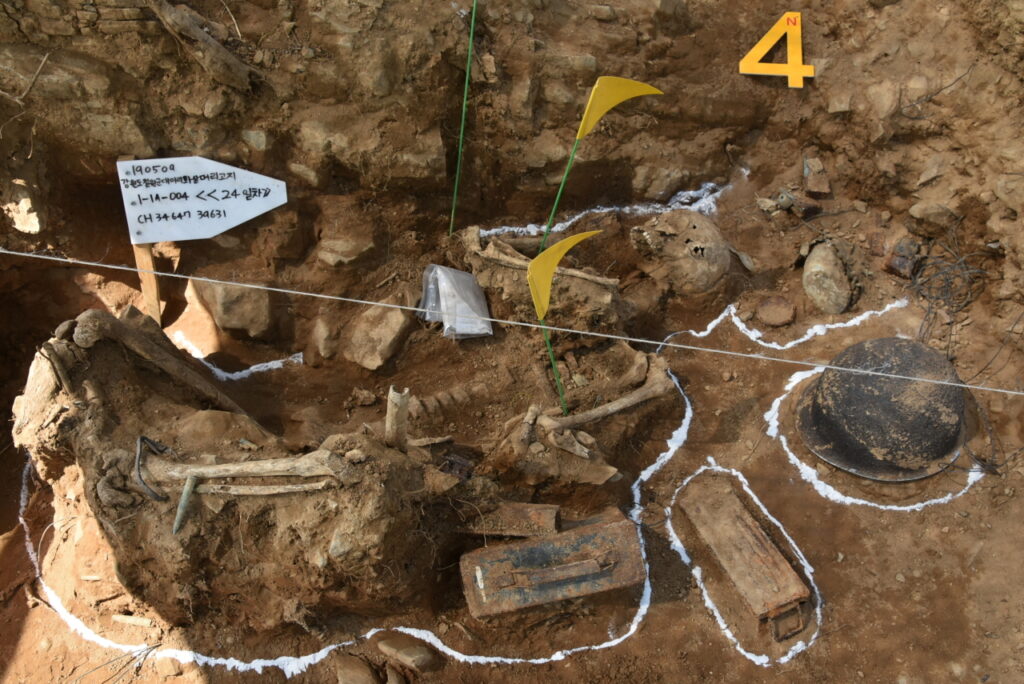S. Korea identifies 4 Korean War soldiers from remains found in DMZ
The bones of the soldier and its relics were excavated in arrowhead ridge in the central section of the inter-Korean border in Cheorwon, Gangwon Province, a region of heinous battles in the 1950-53 Korean War that is now inside the Demilitarized Zone.

The Ministry for Defense, on Monday, has just named four soldiers killed in a war that has been identified.
A sergeant first class, a staff sergeant and two sergeants are believed to have died in the fourth battle that took place on Arrowhead Ridge, now inside the DMZ, about two weeks before a truce ending the Korean War was signed July 27, 1953.
A National Defense Agency for Killed in Action Recovery and Identification (MAKRI) taskforce conducted excavation work on the ridge, a central section of the inter-Korean border in Cheorwon, Gangwon Province, between April and November last year.
The team identified another three soldiers last year.
“Numerous items were found with the remains of the four soldiers, such as water bottles, ammunition, identification tags, insignias, certificates, bayonets, combat shoes, and helmets,” the team said in a press release.
“The four soldiers participated in the Korean War at the age of twenty. Among them, three were married and each had a child left behind with their wives.”
The team said the identification of the dead soldiers was possible thanks to genetic sampling conducted on around 40,000 bereaved family members. But it said it still needs to collect more samples.
Through the excavation conducted last year, the team found about 2,000 bones believed to be from over 260 soldiers as well as 67,000 war items in the DMZ area.
It is estimated that there the remains of over 10,000 war dead are in the area.





